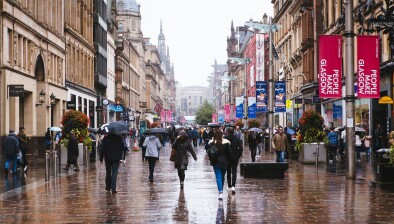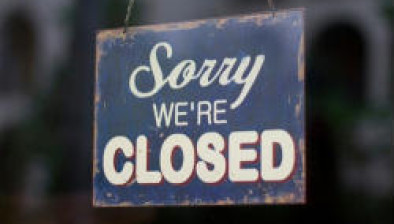Scottish shop vacancy rate dropped to 16.1% in final quarter of 2021
In the fourth quarter of 2021, the Scottish vacancy rate decreased to 16.1%, from 16.4% in Q3, according to the latest figures published by the Scottish Retail Consortium (SRC) and the Local Data Company.

However, the vacancy rate was still 1.7 percentage points higher than in the same point in 2020.
At the same time, shopping centre vacancies decreased to 20.4% from Q3’s 21.4%. On the High Street, vacancies remained at 15.0% for the second consecutive quarter in Q4. While retail park vacancies decreased to 12.6% in Q4 2021, down from 13.4% in Q3. It remains the location with the lowest rate.
David Lonsdale, director of the SRC, said: “Scotland’s shop vacancy rate marginally improved in the final months of 2021 following six successive quarters of deterioration. It was a small, but nonetheless welcome, improvement aided by pop-ups and temporary lets deployed in the run up to the all-important festive trading period. That said, these figures offer few crumbs of comfort. Too many stores aren’t in use and the vacancy rate has remained above 16% for a third successive quarters. The volume of empty units is especially prominent in Scotland’s shopping centres.
“The fallout from the pandemic continues to exert a heavy toll on retail destinations, and a sustained shift towards hybrid working could make it trickier for store vacancy rates to ever fully recover. The extent to which retail remains the cornerstone of our town and city centres and can continue to employ almost a quarter of a million Scots will be influenced by decisions made by policy makers.
“With retailers’ revenues and shopper footfall continuing to fall short, more support is required. It is encouraging that several government reports are scheduled to be published soon – on city centre recovery, a town centres action plan, and a retail strategy. However, we cannot get away from the fact that one in every six retail premises is lying vacant, a visible reminder of why scrapping the cap on retailers’ business rates relief this Spring is absolutely vital.”
Lucy Stainton, director, Local Data Company, added: “Vacancy rates are a strong barometer of the health of our high streets – with this in mind, it is very encouraging to see the increase in empty units finally stabilising after such a sharp rise over the past two years. This is the first real indication that the most significant structural impacts of the pandemic are potentially at their peak for certain regions, and operators, landlords and local government alike can start to rebuild after a particularly turbulent period.
“We are still seeing rationalisation across many of the chain retailers and leisure operators reflected in these latest statistics, but the growth in the number of independent businesses is helping stem further increases in vacant units. This is particularly key to note as having more independent operators alongside larger brands creates more diverse and entertaining spaces for consumers, which will further bolster attractiveness and therefore recovery.”
She concluded: “Landlords, and place-makers more generally, will need to closely consider how the needs and wants of local consumers might have changed post-pandemic, and align with operators who are active and meet their demands such that the first signs of recovery continue.”







